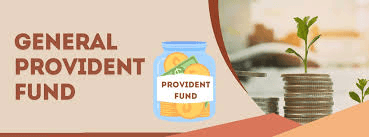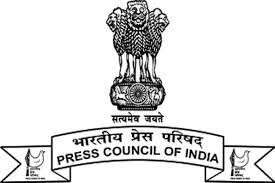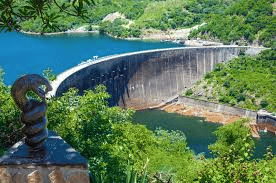UPSC Daily Current Affairs: 17th November 2024 | Current Affairs & Hindu Analysis: Daily, Weekly & Monthly PDF Download
GS3/Environment
Carbon Credit Mechanism
Source:The Hindu

Why in News?
A recent study published in the journal Nature has revealed the inadequacy of carbon trading systems in delivering real emission reductions. Conducted by researchers from European and American institutions, the study examined numerous projects responsible for generating carbon credits equating to one billion tonnes of CO2. It found that only 16% of these credits correlated with actual emission reductions.
- A carbon credit is a certificate or permit that allows its holder to emit one tonne of carbon dioxide (CO2) or an equivalent amount of another greenhouse gas (GHG). These credits are created through initiatives that either reduce emissions or extract CO2 from the atmosphere.
Examples include:
- Renewable energy projects such as solar or wind farms.
- Energy efficiency programs.
- Reforestation or afforestation efforts.
- Methane capture from landfills or industrial facilities.
How the Carbon Credit Mechanism Works?
- Setting Emission Caps: Regulatory bodies set limits on emissions for various industries. Companies that emit less than their quota can sell excess credits, while those that exceed their limits must purchase credits to meet regulations.
- Generating Carbon Credits: Credits are awarded to projects that prove measurable and verifiable GHG reductions. Certification is typically granted by recognized international standards like the Verified Carbon Standard (VCS) or the Gold Standard.
- Trading Carbon Credits: Carbon credits are bought and sold on platforms like the European Union Emissions Trading System (EU ETS) or in voluntary markets, providing financial incentives for reducing emissions.
- Offsetting Emissions: Organizations can buy credits to counterbalance their emissions, helping them achieve carbon neutrality.
Types of Carbon Credit Markets:
- Compliance Market: Functions under legally binding agreements such as the Kyoto Protocol or the Paris Agreement, requiring companies to adhere to emission limits.
- Voluntary Market: Allows companies, individuals, or organizations to buy credits voluntarily to fulfill corporate social responsibility (CSR) objectives or personal sustainability commitments.
Benefits of the Carbon Credit Mechanism:
- Environmental Impact: Promotes the use of cleaner technologies and sustainable practices.
- Economic Incentives: Rewards initiatives that significantly cut emissions, driving innovation.
- Flexibility: Offers industries cost-effective means to comply with emissions targets.
- Global Collaboration: Encourages international cooperation to tackle climate change.
Challenges and Criticisms:
- Verification and Accountability: It can be difficult to confirm that carbon credits genuinely represent real and measurable reductions in emissions.
- Market Volatility: The prices of carbon credits can vary widely, impacting market stability.
- Greenwashing: Companies might misuse carbon credits to appear environmentally conscious without implementing meaningful changes.
- Inequitable Access: Developing nations may struggle to obtain the necessary resources to generate carbon credits.
Carbon Credits in the Indian Context:
- Renewable Energy: India's investment in solar, wind, and hydropower projects aligns well with generating carbon credits.
- Afforestation: Initiatives like the National Afforestation Programme contribute to emission offsets.
- Export Potential: Indian businesses can sell excess carbon credits on international markets, creating revenue streams.
- Government Initiatives: Programs such as the Perform, Achieve, and Trade (PAT) scheme promote energy efficiency and the development of carbon assets.
Key Findings:
- Kyoto Protocol Mechanisms: Most credits analyzed were generated under the Kyoto Protocol, which has faced substantial criticism for its integrity.
- Effectiveness by Project Type: Projects aimed at reducing HFC-23 emissions were the most successful, with 68% of credits leading to real reductions.
- The study highlighted the need for "additionality" in carbon crediting, meaning that emission reductions should not happen without the financial support from carbon credits. Many current methods for assessing additionality have resulted in non-additional projects being registered.
Recommendations:
- Researchers recommend tightening eligibility for carbon credit projects to those demonstrating a high likelihood of additionality and substantial financial reliance on carbon credit revenues.
- Standards and methodologies for measuring emission reductions must be significantly improved to ensure credibility.
Developments Under the Paris Agreement:
- The carbon market mechanism is the final component of the 2015 Paris Agreement yet to be fully implemented.
- New, stricter frameworks for carbon trading are in development to correct the deficiencies of the Kyoto-era mechanisms.
Two Mechanisms Under Development:
- Bilateral Country-Level Trade: Countries that exceed their emission reduction goals can sell credits to others through negotiated agreements.
- International Carbon Market: Designed to include multiple participants, with institutions being established to regulate, verify, and authenticate the trading of credits.
Progress at COP29:
At the ongoing COP29 meeting in Baku, two crucial rules for carbon markets were approved on the opening day; however, significant work remains. These new mechanisms aim to uphold the integrity of carbon credits and enhance their effectiveness in fighting climate change.
GS2/Polity
National Press Day celebrations
Source:AIR

Why in news?
The Press Council of India celebrated National Press Day 2024 at the National Media Centre, New Delhi. Union Minister Ashwini Vaishnaw, addressing the event virtually as the chief guest, emphasized the dynamic media ecosystem in India, which includes 35,000 registered newspapers, various news channels, and sophisticated digital infrastructure. He noted that investments in 4G and 5G technologies have established India as a global leader in digital connectivity, boasting the lowest data prices worldwide.
About
- The PCI is a statutory and autonomous body created under the Press Council Act of 1978.
- It serves as a guardian of the press, ensuring accountability while protecting media independence.
Functions
- Preserving Press Freedom: Protects the press from external influences and governmental interference.
- Maintaining Standards: Promotes ethical journalism by developing guidelines and ensuring compliance with journalistic ethics.
- Resolving Complaints: Investigates grievances against and by the press, addressing issues such as defamation and biased reporting.
- Advisory Role: Advises the government on issues impacting media freedom and development.
Structure
- Chairperson: A retired Supreme Court judge appointed by a committee that includes the Speaker of the Lok Sabha, the Chairman of the Rajya Sabha, and an elected member of the Council.
- Members: Consists of representatives from newspapers, media organizations, and the public, representing diverse media and civil society interests.
Powers
- Quasi-Judicial Authority: Can summon parties, demand evidence, and investigate complaints but lacks the power to impose penalties.
- Advisory Capacity: Makes recommendations to the government and stakeholders regarding policy matters.
- Regulatory Role: Issues guidelines to maintain ethical journalistic practices.
Criticism
- Lack of Enforcement Powers: Critics argue that the PCI's inability to impose penalties restricts its effectiveness. For example, sensationalism and paid news continue despite several guidelines.
- Exclusion of Digital Media: The PCI's jurisdiction primarily covers print media, leaving the rapidly expanding digital media sector unregulated.
- Perceived Bias: The council faces accusations of partiality, especially in politically sensitive cases, and has been criticized for its minimal response to media polarization issues.
- Ineffectiveness: Critics claim that the council's recommendations are frequently disregarded, diminishing its role as a regulatory body.
Key Highlights of the Speech Delivered by the Union Minister
- Fake News and Disinformation
- The Union Minister stressed the threats posed by fake news to public trust and democracy.
- He questioned the relevance of the "Safe Harbor" provision, which protects digital platforms from liability for user-generated content.
- He emphasized the necessity for accountability frameworks tailored to India's complex societal fabric to combat misinformation.
- Fair Compensation for Content Creators
- The Minister highlighted the financial challenges facing traditional media due to the transition to digital platforms.
- He advocated for fair compensation for conventional media outlets that heavily invest in journalism to correct the imbalance in negotiating power with digital platforms.
- Algorithmic Bias
- Concerns were raised about algorithms on digital platforms that promote sensational and divisive content to enhance engagement.
- The Minister urged these platforms to address the social repercussions of such biases, particularly within India's diverse population, and to implement responsible solutions to mitigate their effects.
- Artificial Intelligence and Intellectual Property Rights
- Vaishnaw discussed the ethical and economic challenges posed by AI systems utilizing original creators' work for model training.
- He stressed the importance of protecting intellectual property rights and ensuring that creators receive appropriate recognition and compensation for their contributions.
- Government Efforts Against Misinformation
- A Fact Check Unit has been established under the Press Information Bureau (PIB) to counter misinformation and verify news authenticity.
- These initiatives underscore the government's commitment to combating misinformation in the digital age.
- Supporting Journalists Through Policy Reforms
- Participants discussed government schemes aimed at journalist welfare, including accreditation, health programs, and capacity building through the Indian Institute of Mass Communication (IIMC).
- Reforms such as the Press and Registration of Periodicals Act, 2023, were highlighted for modernizing media regulations.
GS3/Environment
What is Leucism?
Source:The Hindu

Why in News?
Tamil Nadu Forest Department staff and members of a non-governmental organisation recently rescued a rare peacock with white feathers, caused by a genetic condition called leucism.
About Leucism:
- Leucism is a genetic condition characterized by reduced pigmentation.
- This condition affects various animals, including birds, mammals, and reptiles, resulting in an overall pale appearance or patches of diminished color.
- The underlying cause of leucism is a genetic mutation that prevents melanin and other pigments from being deposited in feathers, hair, or skin.
- In birds, leucism manifests in alterations to their plumage, meaning the birds do not display their typical, vibrant colors.
- Birds affected by leucism may exhibit white patches in areas where color is usually present, or their entire plumage may appear bleached or washed out.
Albinism vs. Leucism:
- Albinism is a rare condition where there is a complete absence or very minimal production of melanin.
- Melanin is a natural pigment found in skin, eyes, and even brain tissue, and its quantity determines the coloration of these tissues.
- Individuals with albinism typically have very light or pinkish skin and red or pink eyes, which occur because the underlying blood vessels are visible through the lack of pigmentation.
- In contrast, leucism involves only a partial reduction in melanin production and/or distribution.
- Animals with leucism can have white or patchy colored skin, hair, or feathers, while the pigment cells in their eyes, legs, and bills remain unaffected.
GS2/Governance
What is the General Provident Fund (GPF)?
Source: Business Today

Why in news?
A division bench of the Madras High Court recently upheld the Central Administrative Tribunal's orders granting pension rights under the General Provident Fund (GPF) scheme to retired Kendriya Vidyalaya teachers.
About General Provident Fund (GPF):
- GPF is a savings scheme that was initiated in 1960, exclusively available to government employees in India.
- The main goal of GPF is to ensure a reliable source of income for government employees after their retirement.
- Government employees can deposit a certain percentage of their salary into their GPF account.
- In contrast to the Employees Provident Fund (EPF), only employees make contributions to the GPF; the employer does not contribute.
- Upon retirement, the total amount accumulated in the GPF account is paid to the employee.
Eligibility for GPF:
- All temporary government staff who have served continuously for at least one year.
- Re-employed pensioners, except those eligible for the contributory provident fund.
- All permanent government employees are also eligible to subscribe to the GPF.
Contribution Details:
- Contributions to the GPF are mandatory for government employees, who are required to contribute a specified percentage of their salary.
- These contributions are deducted directly from the employee's monthly salary.
- The deposited amount earns interest at a predetermined rate set by the government.
- The minimum contribution is 6% of the salary, while employees can contribute up to 100% if desired.
Withdrawal Process:
- Employees can withdraw their accumulated savings from the GPF upon retirement or resignation.
- The GPF scheme allows for withdrawals for various purposes, such as marriage, education, or medical emergencies.
- Employees may also take loans against their GPF account, subject to specific conditions.
- If an employee transfers to another government department or leaves their job, they can transfer their GPF balance to the new employer.
- In the unfortunate event of an employee's death, the GPF balance will be paid to their nominated beneficiary.
Interest Rates:
- Interest rates for the GPF are revised periodically based on notifications issued by the government.
- The GPF scheme is managed by the Department of Pension and Pensioners' Welfare under the Ministry of Personnel, Public Grievances and Pensions.
Benefits of GPF:
- The GPF scheme offers multiple advantages to government employees, such as tax savings, low-risk investment opportunities, and guaranteed returns on contributions.
GS3/Environment
Carbon Dioxide
Source: The Guardian

Why in News?
India’s carbon dioxide (CO2) emissions from burning fossil fuels are expected to increase by 4.6% in 2024, the highest among major economies, according to a new report by Global Carbon Project.
About Carbon Dioxide:
- Carbon dioxide is a colourless gas that has a faint, sharp odour and a sour taste.
- It serves as a significant heat-trapping gas, commonly referred to as a greenhouse gas.
- This gas is produced through the extraction and combustion of fossil fuels such as coal, oil, and natural gas, as well as from wildfires and natural events like volcanic eruptions.
- CO2 is one of the most crucial greenhouse gases in the atmosphere and is the leading cause of human-induced climate change.
- The presence of carbon dioxide in the atmosphere prevents some of the radiant energy from the Earth from escaping back into space, leading to the greenhouse effect.
- Carbon dioxide has multiple practical applications, including:
- Being used as a refrigerant.
- Utilized in fire extinguishers.
- Inflating life rafts and life jackets.
- Serving in the blasting of coal.
- Employed in the production of foamed rubber and plastics.
- Supporting plant growth in greenhouses.
- Used to immobilize animals before slaughter.
- Incorporated in carbonated beverages.
- Research indicates that CO2 is the most significant contributor to climate change among various drivers.
- It is considerably more prevalent in the atmosphere than other greenhouse gases like methane (CH4) and hydrofluorocarbons (HFCs).
- Carbon dioxide persists in the atmosphere longer than other major greenhouse gases resulting from human activity.
- A report from the Union of Concerned Scientists (UCS) notes that:
- 40% of emitted CO2 remains in the atmosphere for 100 years.
- 20% will stay for 1,000 years.
- The final 10% may take up to 10,000 years to fully dissipate.
GS3/Environment
Senna tora Plant
Source:The Hindu

Why in news?
The Tamil Nadu Forest Department is currently conducting experiments aimed at controlling the invasive plant species Senna tora, which has started to appear in certain regions of the Mudumalai Tiger Reserve (MTR).
About Senna tora Plant:
- Senna tora is a plant native to Central America.
- It can be classified as either an annual, perennial, or subshrub.
- This species predominantly thrives in wet tropical climates but is also emerging in drier regions.
- It typically germinates following the southwest monsoon and tends to wither by year's end.
- Senna tora has various uses, including as animal fodder, a medicinal herb, a toxin, and for environmental purposes.
Key facts about Mudumalai Tiger Reserve (MTR):
- Mudumalai Tiger Reserve is situated in the Nilgiris District of Tamil Nadu, at the convergence of Karnataka, Kerala, and Tamil Nadu.
- The name 'Mudumalai' translates to 'ancient hill range,' as this area is approximately 65 million years old, dating back to the formation of the Western Ghats.
- The reserve shares boundaries with Wayanad Wildlife Sanctuary in Kerala to the west and Bandipur Tiger Reserve in Karnataka to the north.
- One of the notable attractions in the area is the Theppakadu elephant camp.
Vegetation:
- The reserve features a diverse range of habitats, including tropical evergreen forests, moist deciduous forests, teak forests (both moist and dry), secondary grasslands, and wetlands.
Flora:
- Mudumalai is home to tall grasses commonly known as "Elephant Grass," along with giant bamboo and valuable timber species such as Teak and Rosewood.
Fauna:
- The reserve hosts a variety of wildlife, including elephants, Gaur, tigers, leopards, spotted deer, barking deer, wild boars, and porcupines.
GS2/Governance
Resolving the Issue of Overcrowded Prisons in India
Source:The Hindu

Why in news?
India's prison system faces significant challenges, especially concerning overcrowding, which impairs the effectiveness of correctional facilities. A recent report from the Supreme Court’s Centre for Research and Planning has suggested implementing electronic tracking devices to tackle this issue, representing a potential transformation in India's correctional framework.
Statistics on Overcrowding of Prisons in India:
- As of December 31, 2022, the occupancy rate of India's prisons stood at 131%, with a total of 573,220 inmates compared to a capacity of 436,266.
- Undertrial prisoners (UTPs) make up 75.7% of the total inmate population, exacerbating the overcrowding problem.
Key Recommendations in the Report on Prisons in India:
- The report titled "Prisons in India - Mapping Prison Manuals and Measures for Reformation and Decongestion" was recently published by the President of India.
- It recommends a phased implementation of electronic monitoring to facilitate the release of UTPs, aiming to alleviate prison overcrowding.
- The initial focus will be on low and moderate-risk UTPs who exhibit good behavior.
- The phased approach will evaluate community readiness and the practicality of broader electronic tracking applications.
Global Practices and Indian Legal Context on Electronic Monitoring of Prisoners:
- International adoption: Countries such as the US, UK, Canada, Malaysia, and Australia effectively utilize electronic tracking to manage prison populations.
- Indian legislative framework:
- The Model Prisons and Correctional Services Act, 2023, incorporates electronic tracking devices as a prerequisite for granting prison leave.
- The Law Commission of India's 2017 report acknowledged the cost-saving and security advantages of electronic tagging, while also stressing a cautious approach.
- Judicial developments:
- Courts have imposed location-tracking conditions as part of bail in specific instances.
- The Supreme Court has recently voiced disapproval of constant surveillance of individuals on bail, highlighting the necessity for clear guidelines to maintain a balance between security and privacy.
Benefits of Electronic Tracking of Prisoners:
- Prison decongestion: Helps reduce the number of inmates while ensuring oversight.
- Mental health benefits: Enhances family connections and alleviates the stress associated with isolation.
- Cost-effectiveness: Reduces the financial burden linked to maintaining high incarceration levels.
- Rehabilitation incentives: Promotes good behavior by linking it with opportunities for parole or furlough.
Concerns and Safeguards for Electronic Tracking of Prisoners:
- Risks of misuse: A universal application could potentially lead to abuses, infringing on civil liberties.
- Operational challenges: There may be difficulties in ensuring equitable implementation.
Recommendations for ethical use:
- Establishment of clear guidelines for implementation to avoid violating prisoners’ rights.
- Implementation of strict safeguards to prevent misuse while achieving the goal of decongestion.
Conclusion:
- Experts have lauded tracking devices for their potential to relieve prison burdens and reduce mental stress among inmates, yet they caution against universal application due to risks of misuse and ineffectiveness in certain situations.
- The deployment of electronic tracking devices could provide a promising solution to India's prison overcrowding dilemma.
- However, success will depend on a careful and well-regulated strategy that reconciles technological benefits with respect for individual rights.
GS2/Polity
Press Council of India
Source:PIB
Why in News?
National Press Day, celebrated on November 16, commemorates the initiation of the Press Council of India (PCI) in 1966.
About Press Council of India:
- The Press Council of India was established in 1966 based on the recommendations of the First Press Commission, chaired by Justice J.R. Mudholkar.
- It currently operates under the Press Council Act of 1978.
- This body is statutory and quasi-judicial, serving as a guardian of press freedom in India.
Composition:
- The council is composed of a Chairman and 28 other members.
- The Chairman is selected by a committee that includes the Chairman of Rajya Sabha, the Speaker of Lok Sabha, and a representative from the council itself.
- Traditionally, the Chairman has been a retired Supreme Court judge.
- The term duration for both the Chairman and the council members is three years.
Primary Function:
- The primary role of the Press Council is to oversee media practices and safeguard the freedom of the press.
Other Functions:
- Support newspapers in preserving their independence.
- Establish a code of conduct for journalists and newspapers that aligns with high professional standards.
- Examine developments that may limit the availability and distribution of news that is of public interest and significance.
- Review cases where Indian newspapers or news agencies receive assistance from foreign sources, as directed by the Central Government.
- Resolve complaints regarding violations of journalistic ethics by the press or interference with press freedom.
GS3/Environment
Lake Kariba
Source:The Guardian

Why in News?
A severe drought has significantly reduced the water levels of Lake Kariba, bringing them close to record lows. This situation raises concerns that the Kariba Dam, which has been operational for 65 years, might have to be shut down for the first time.
About Lake Kariba:
- Located in central Africa, Lake Kariba lies along the border of Zambia and Zimbabwe.
- The lake is positioned 810 miles upstream from the Indian Ocean.
- It holds the title of the world's largest man-made lake.
- Covering an area of 2,000 square miles (5,200 square km), it is a vast water body.
- The lake was created by damming the Zambezi River in the Kariba Gorge, which is situated 250 miles (400 km) downstream from Victoria Falls.
Kariba Dam Specifications:
- The dam features a double-arch wall design.
- It has a height of 128 meters and a length of 617 meters.
- The width of the dam at the top is 13 meters, while at the base, it measures 24 meters.
Importance of Lake Kariba:
- The dam generates significant electric power, benefiting both Zambia and Zimbabwe.
- It supports a thriving commercial fishing industry, which is vital for local economies.
Geographical Features:
- Lake Kariba includes a total of 102 islands, with notable islands like Chete Island and Spurwing Island.
- The area boasts the largest protected expanse of undeveloped wetlands in the world.
- It is home to the largest single population of African elephants, enhancing its ecological significance.
Current Concerns:
- The ongoing drought could have serious implications for the hydropower generation that many rely on.
- There is a risk that the Kariba Dam may not be able to operate effectively if water levels continue to fall.
GS2/International Relations
Riyadh summit and possible impact on Gaza war
Source:The Hindu

Why in news?
Saudi Arabia recently hosted a summit involving leaders from Arab and Islamic nations to address the escalating crisis in Palestine. The leaders collectively called for an immediate cessation of Israel’s military actions in Gaza and Lebanon. The discussions underscored the urgent need for protecting Palestinian lives, respecting international law, and pursuing a peaceful resolution to the conflict.
Riyadh Summit – Outcome and Significance
- The summit concluded with Arab and Islamic leaders condemning Israel's military actions in Gaza, describing them as "shocking crimes," including terms like "genocide" and "ethnic cleansing."
- Leaders called for an independent international investigation into these actions.
- There was a strong emphasis on measures to end Israeli occupation.
- The summit advocated for the establishment of a sovereign Palestinian state based on pre-1967 borders, with East Jerusalem as its capital, aligning with both the two-state solution and the 2002 Arab Peace Initiative.
Current status of Saudi-Israel ties
- Recent years have seen some Arab nations normalizing relations with Israel, often sidestepping the Palestine issue and deviating from the Arab Peace Initiative, which previously linked Israel's recognition to Palestinian statehood.
- The Abraham Accords of 2020 involved countries like the UAE, Bahrain, Morocco, and Sudan, which did not make concessions for Palestinians, unlike earlier agreements with Egypt and Jordan that included steps towards Palestinian autonomy.
- After the October 7, 2023, Hamas attack and subsequent Israeli actions, Arab nations condemned Israel but avoided direct military confrontation.
- At the Riyadh summit, leaders collectively expressed outrage over Israel's actions, emphasizing that resolving the Palestine issue is crucial for achieving lasting peace in the region.
Possibility of Arab World Joining the War
- The ongoing conflict refers to the situation between Israel and Hamas, which governs Gaza, triggered by the Hamas attack on Israel on October 7, 2023. This has led to significant Israeli airstrikes and ground operations in Gaza.
- The conflict has precipitated a severe humanitarian crisis, widespread destruction, and increased tensions throughout West Asia.
- Despite a strategic realignment in the region, experts believe the likelihood of the Arab world engaging in the war is low.
- Arab states and Iran have entered a tactical detente, showing a temporary pause in their long-standing rivalry.
Impact of Recent Events on Normalization Efforts
- Before the October 7 incident, Arab nations were moving closer to normalizing relations with Israel, often sidelining discussions about the Palestine issue.
- However, the current war has disrupted these normalization efforts, with even the UAE now connecting its support for Israel to the establishment of a Palestinian state.
- Saudi Arabia has maintained a delicate balance between its opposition to Hamas and the sentiments of its population, insisting that any normalization with Israel must address the Palestine situation.
- During the summit, Crown Prince Mohammed criticized Israel's actions as "genocide," marking a notable decline in Saudi-Israel relations over the past year.
GS2/International Relations
What is Unified Complex Radio Antenna (UNICORN)?
Source:PIB
Why in news?
India and Japan recently finalized a Memorandum of Implementation (MoI) for the co-development of the UNICORN (Unified Complex Radio Antenna) mast, which will be deployed on Indian Navy ships. This marks India's first military technology transfer agreement with Japan, following a prior agreement nine years earlier aimed at enhancing defense collaboration between the countries. The UNICORN mast is a crucial military technology that the Indian Navy is interested in, alongside the US-2 amphibian aircraft.
About Unified Complex Radio Antenna (UNICORN):
- UNICORN is an advanced integrated antenna system.
- It incorporates various communication systems to enhance the stealth capabilities of naval vessels.
- The development of UNICORN involved collaboration among three Japanese firms: NEC Corporation, Sampa Kogyo K.K., and The Yokohama Rubber Co., Ltd.
- Currently, these antennas are installed on the Mogami-class frigates of the Japan Maritime Self-Defense Force.
- Unlike traditional masts, UNICORN merges multiple antennas into a single radar dome, referred to as a radome.
- This design innovation greatly minimizes the radar cross-section of naval ships, improving their stealth features and enabling them to operate with lower electronic signatures.
- The strategic placement of antennas enhances the maximum detection range of incoming radio waves and simplifies both maintenance and installation procedures.
|
44 videos|5257 docs|1109 tests
|
FAQs on UPSC Daily Current Affairs: 17th November 2024 - Current Affairs & Hindu Analysis: Daily, Weekly & Monthly
| 1. What is the Carbon Credit Mechanism and how does it work? |  |
| 2. What are the key objectives of National Press Day celebrations in India? |  |
| 3. What is Leucism and how does it differ from albinism? |  |
| 4. What is the General Provident Fund (GPF) and who is eligible to contribute? |  |
| 5. How is carbon dioxide significant in the context of climate change? |  |
















